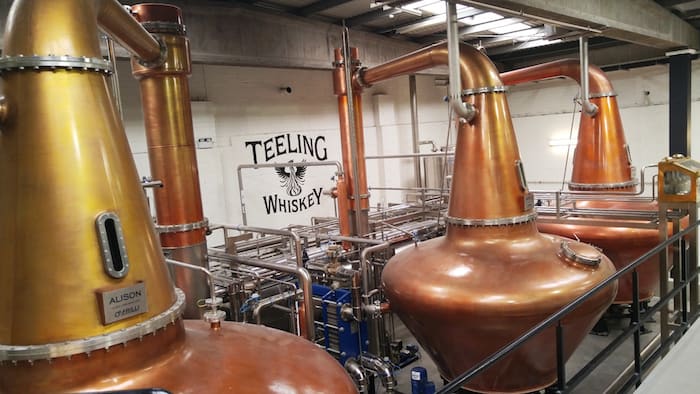The extensive use of copper for the manufacture of distilling equipment is not a decision made on economic grounds. As of April 2016, copper trades at around $2.22/lb, while 304 stainless steel trades at just $0.89/lb. So it is pertinent to consider: What makes copper as a material of construction so advantageous that it outweighs the higher cost?
Well, copper has been in use since prehistory (the use of copper metal probably begins before 8000 BCE), not least because it is easily released from its common ores, and indeed can even be found as the free metal in nature.
While the relative ease of isolating copper metal in its pure form helped to establish it as one of the earliest metals in common use, copper chemistry and its physical properties make it uniquely suited as a material of construction for producing potable alcoholic spirits.
The first thing to note is that copper has outstanding ductility and malleability. This means that it can easily be drawn into wires and formed into complex shapes, respectively. This is not insignificant when we think about fabricating worms for condensers. However, apart from the facility to manipulate copper into a wide range of geometries, it is the chemistry of the copper surface that clinches the deal.

Copper has been shown to catalyze the formation of esters from alcohols and acids present in the wash. These esters, often with pronounced fruity character, are arguably more desirable than the free acids, which can impart cheesy, sweaty, vomit and tallow notes if present at high enough concentrations.
Copper also binds strongly to free thiols and hydrogen sulfide. With flavors such as rotting vegetable, drains and sewer it’s not surprising that there is a need to manage levels of these highly flavor-active compounds in the final product.
Copper chemistry is not as simple as it may seem. While it might be assumed that thiols precipitate copper(II) cations, in fact, thiols appear to stabilize the often more labile copper(I) oxidation state. In any case, the blackening of the inside of a still over time is testament to copper’s reactivity with species in the wash.
However, of even more importance is the ability of copper to oxidize the cyanide anion. Cyanide is released from its precursor, known colloquially as epiheterodendrin, from malted barley and, if left unchecked, can be converted firstly into cyanate and then into ethyl carbamate, a suspect cancer-causing agent. Nevertheless, barley breeders have been successful in eliminating the cyanide precursor, so at least for whiskeys the exposure to ethyl carbamate is minimized.
Copper is also found in the final new make spirit that is filled into casks. This may seem strange; after all, copper is not volatile and will not evaporate from the still. The reason for its presence is that small amounts of copper are leached from descending lyne arms and condensers, resulting in copper levels typically at 1 – 5 mg/l. (Higher levels are usually found when shell-and-tube condensers are used.)
The exact significance of this is not clear. However, copper(II) cations have an affinity for oxygen- and nitrogen-based ligands, and may complex to the toast/char layer in a cask, perhaps facilitating further oxidation reactions during the progress of maturation.
Finally it is worth bearing in mind that the main products from a whiskey distillation in terms of volume are the pot ale (around 65% of the starting wash) and spent lees (around a quarter of the volume of the starting wash). There are various approaches to disposal, but the copper levels, typically 20 – 50 mg/l, cannot be ignored.
So if a farmer sprays pot ale on to fields to add nutrients to the soil, it is advisable not to graze sheep as they are sensitive to copper and can readily develop copper toxicosis. This does little to improve the distiller’s reputation with farmers!







